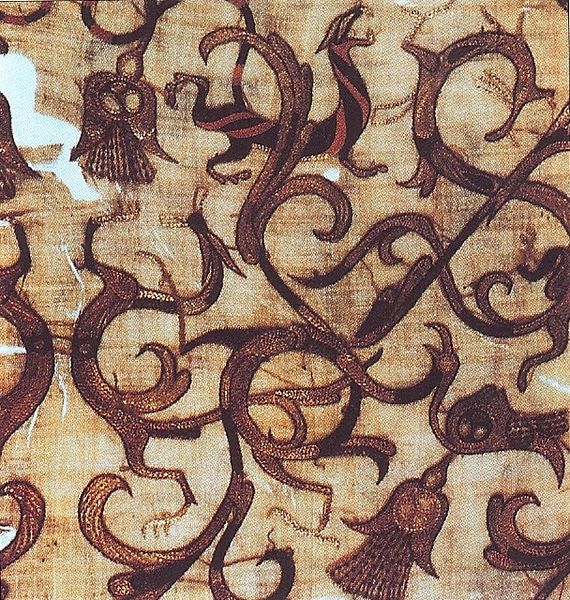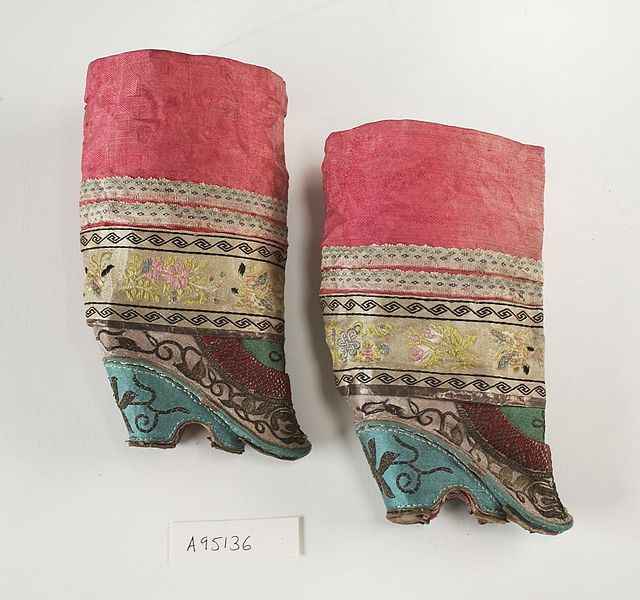Blackwork, sometimes historically termed Spanish blackwork, is a form of embroidery generally worked in black thread, although other colours are also used on occasion, as in scarletwork, where the embroidery is worked in red thread. Originating in Tudor period England, blackwork typically, though not always, takes the form of a counted-thread embroidery, where the warp and weft yarns of a fabric are counted for the length of each stitch, producing uniform-length stitches and a precise pattern on an even-weave fabric. Blackwork may also take the form of free-stitch embroidery, where the yarns of a fabric are not counted while sewing.
Early Spanish blackwork: Borgoña's Lady with Hare wears a chemise embroidered at the neckline and on the sleeves, c. 1505, Toledo.
Geometric scarletwork, Venice, 1520s.
Blackwork embroidery on both an outer and inner collar. Portrait of Simon George by Hans Holbein the Younger, 1535.
Bess of Hardwick in geometric scarletwork, 1550s.
Embroidery is the art of decorating fabric or other materials using a needle to stitch thread or yarn. Embroidery may also incorporate other materials such as pearls, beads, quills, and sequins. In modern days, embroidery is usually seen on hats, clothing, blankets, and handbags. Embroidery is available in a wide variety of thread or yarn colour. It is often used to personalize gifts or clothing items.
Embroidery sampler by Alice Maywood, 1826
Laid threads, a surface technique in wool on linen. The Bayeux Tapestry, 11th century
Detail of embroidered silk gauze ritual garment. Rows of even, round chain stitch used for outline and color. 4th century BC, Zhou tomb at Mashan, Hubei, China.
A pair of Chinese shoes for bound 'lily' feet








